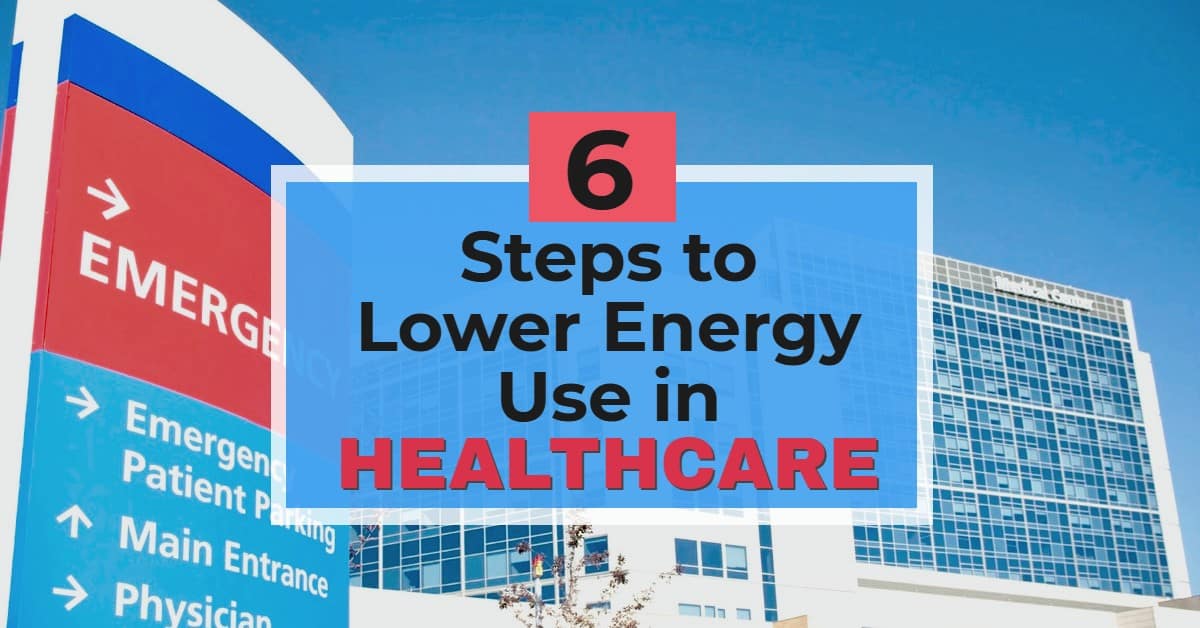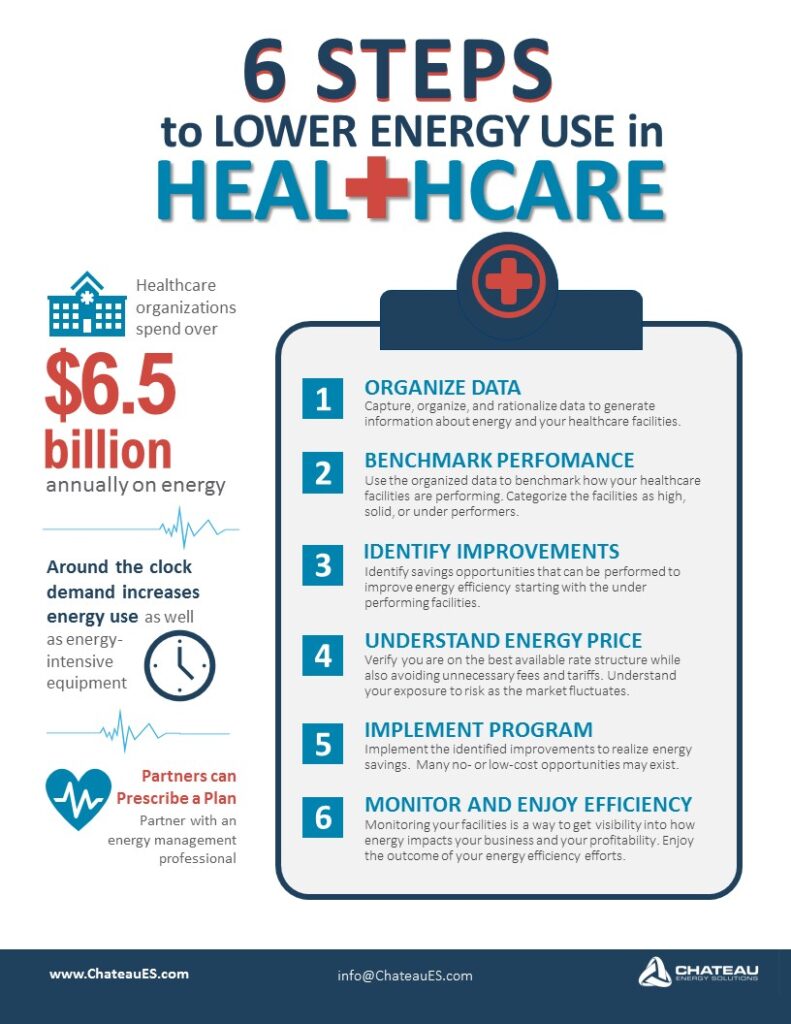
 Posted by Pam Hoddinott
Posted by Pam Hoddinott Patient care is the top priority for healthcare organizations – rightfully so. In addition to this, hospital administrators are also dealing with budget constraints, staffing issues, inspections, and reporting requirements. It is easy to understand that energy optimization is not high on the list of priorities. However, if healthcare organizations are not thinking about energy costs, they should be. It could save them millions.
According to ENERGY STAR, healthcare organizations spend over $6.5 billion on energy each year, and that amount is rising to meet patients’ needs. Furthermore, hospital administrators reveal that utilities and salaries are often the two largest categories in their operations budget. An energy management strategy is critical for healthcare organizations that want to reduce their energy bill. Energy optimization allows for healthcare facilities to:
Protect your Bottom Line while Providing for your Patients
An EPA study shows that every $1 a non-profit healthcare organization saves on energy is equivalent to generating up to $20 in new revenues for hospitals or $10 for medical offices. By Making Energy an Asset®, it allows hospitals to view energy not as a cost but rather as an asset that drives value. The energy savings gained from implemented energy efficiency projects can be reinvested back into the hospital to further help the needs of the organizations and patients.
This means an energy efficiency project that saves $20,000 is equivalent to generating $400,000 in new revenues per year over the lifetime of the equipment. This same EPA study also states that reducing energy costs by 5 percent, at for-profit hospitals, medical offices, and nursing homes is like increasing earnings-per-share by one penny.
Healthier Energy Use
Hospitals use a lot of energy. According to the U.S. Energy Information Administration (EIA), hospitals are one of the most intensive users of total energy among the building types. Hospital energy use is high because of around-the-clock demand for all end uses and because of a wide variety of specialized, energy-intensive equipment such as medical imaging equipment.
So how do healthcare facilities provide quality care while also maintaining efficiency and affordability? Operational efficiency is key and that includes lowering energy use through energy optimization. Below are six steps that will help lower the cost per bed by using Energy as an Asset™.
Sustainability and your Community
In the process of caring for patients, hospitals and healthcare facilities use a significant amount of energy and generate a considerable amount of greenhouse gas emissions. Optimizing the energy use at your facility is one sustainability strategy that will lessen the impact on the community environmentally.
Partners can Prescribe a Plan
It’s okay if your organization is not equipped to work through the six steps to lower the cost per bed listed above. Find an energy management partner that is familiar with the healthcare industry. Ideally, this energy expert can consult with you and create a strategy to better manage energy costs, implement the energy management solutions, and then manage and monitor for ongoing energy optimization.
Read this case study on how Chateau Energy Solutions is implementing a national lighting upgrade program for Encompass Health. The program will generate more than $4 million in energy savings annually. In addition to the energy savings, Chateau Energy Solutions uncovers utility rebates and administers them on behalf of Encompass Health. This will provide an additional $1+ million in avoided capital costs.

How Healthcare Organizations Can Lower Energy Use in Six Steps
Chateau Energy Solutions Making Energy an Asset®
Ready to get started on the path to energy efficiency and sustainability?